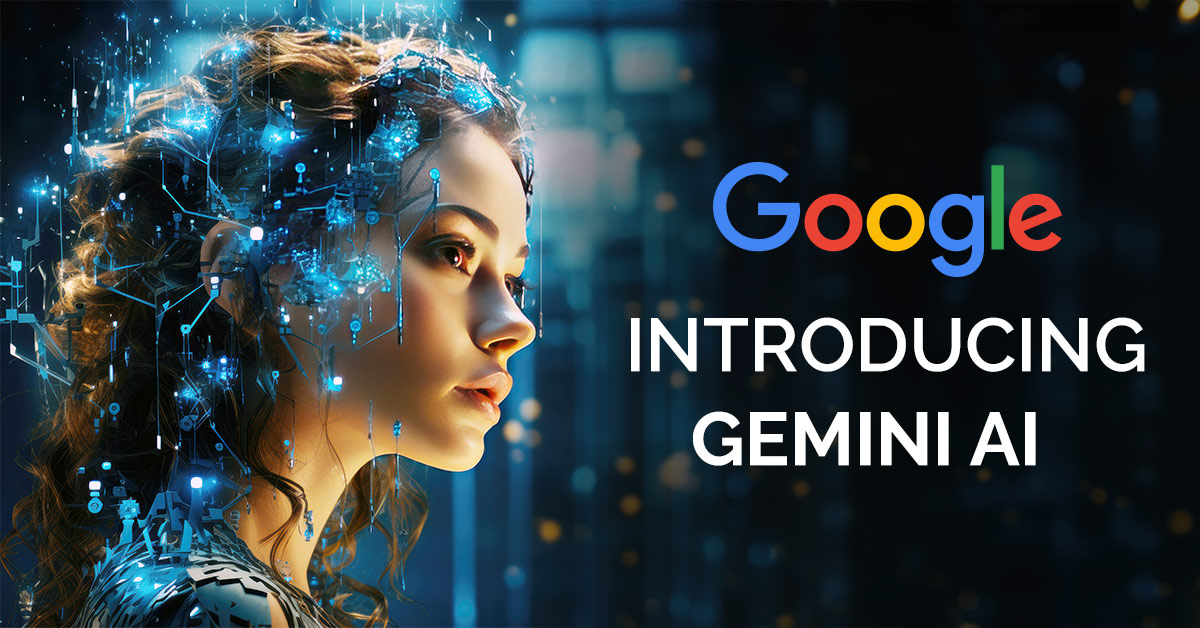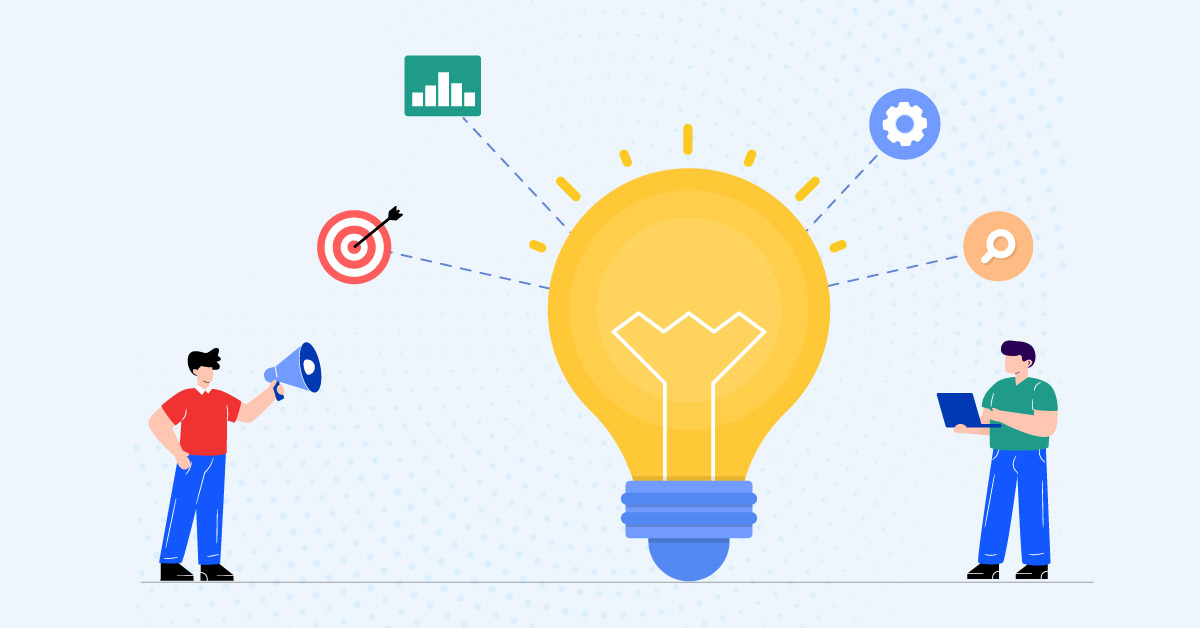
Discover the Future of Conversational AI with Google’s Gemini Chatbot
In the ever-evolving AI war between Google, Microsoft, OpenAI, and others, Google’s Gemini AI now emerges to be at the top that transcends traditional boundaries. Launched on December 6, 2023, Google Gemini AI is designed to comprehend text, images, videos, and audio. It is a versatile, multimodal AI that goes beyond conventional chatbots. This blog unveils the layers of Google Gemini AI, delving into its various versions and applications and a comprehensive assessment against leading AI counterparts.
Table of Contents
What is Google Gemini AI Chatbot?
Gemini is a novel and powerful AI model developed by Google that can comprehend text, images, videos, and audio. As a multimodal model, Gemini is explained as being able to tackle intricate tasks in physics, math, and other fields, as well as understand and generate high-quality code in several programming languages.
Presently, Gemini is accessible through integrations with Google Bard and the Google Pixel 8 and will slowly be incorporated into other Google services.
Insight into Different Versions of Gemini Chatbot
Gemini is being released in three sizes.
- Gemini Nano: Google’s Gemini Nano is a lightweight AI model optimized for mobile devices, specifically the Pixel 8. This streamlined model empowers seamless on-device task execution, even offline. Whether suggesting relevant chat app responses or summarizing text content, Gemini Nano delivers robust AI capabilities independently, ensuring a responsive and uninterrupted user experience.
- Gemini Pro: It is the advanced iteration of Google Gemini AI; Gemini Pro is positioned as the backbone for various Google AI services, notably providing foundational support for Bard starting immediately. Operating within Google’s data centers, Gemini Pro is developed to power the latest version of the AI chatbot, Bard, offering quick response times and a remarkable proficiency in comprehending intricate queries.
- Gemini Ultra: Gemini Ultra, Google’s most potent Large Language Model (LLM), excels at handling overly complex tasks and finds its optimal use in data centers and enterprise applications. While not widely accessible, Google describes Gemini Ultra as surpassing “current state-of-the-art results on 30 of the 32 widely used academic benchmarks used in LLM research and development.” This signifies its superior performance over other LLMs in most standard tests. Developed for demanding tasks, Gemini Ultra is anticipated to be released following the completion of its current testing phase.
How can you access Google Gemini AI?
Gemini is currently accessible on Google products in its Nano and Pro sizes and featured on devices such as the Pixel 8 phone and the Bard chatbot, respectively. Google intends to gradually integrate Gemini into various services, including Search, Ads, Chrome, and others.
Developers and enterprise customers can use Gemini Pro through the Gemini API, which is accessible in Google’s AI Studio and Google Cloud Vertex AI. For Android developers, early access to Gemini Nano is facilitated through AICore, which is available on a preview basis.
Gemini-powered Google Bard vs. ChatGPT vs. Grok vs. Copilot: AI Chatbot Face-Off
Google Joins the AI Chatbot Race, competing with companies like Meta, Microsoft, Snap, and xAI. Despite the global popularity of ChatGPT, recent substantial improvements to Google Bard position it as a formidable competitor in the AI chatbot domain. An evaluation is explained below to understand its performance against counterparts like ChatGPT, Grok, and others.
- Google Bard: The Gemini Pro AI model is now the driving force behind Google Bard, offering an advanced model known for its excellence in mathematics and physics. Benchmark tests comparing it to GPT-4 reveal superiority in 30 of 32 benchmarks, including reasoning, math, reading comprehension, and Python code generation.
Google plans to introduce “Bard Advanced” next year, featuring multimodal capabilities for image, video, and audio generation. This enhanced version seamlessly integrates with various Google products like Drive, Location, and YouTube. Google Bard retains and enhances all previous functionalities through Gemini AI. - ChatGPT: ChatGPT, one of the most popular AI chatbots, operates on the GPT architecture and is celebrated for its pioneering role in conversational AI. The free version uses GPT-3.5, while the subscription-based ChatGPT Plus uses the advanced GPT-4, offering faster responses and plugin compatibility. Irrespective of the version, ChatGPT excels in tailoring responses to diverse queries, thanks to its GPT-based training that enables nuanced comprehension of human language. Additionally, it retains memory of previous interactions over extended sessions, adapting to user input.
- Grok: Grok, an AI chatbot developed by Elon Musk’s xAI, sets itself apart by tackling unconventional and bold questions that other AI systems may typically decline. Elon Musk emphasizes that Grok infuses humor and wit into its responses. Noteworthy is Grok’s ability to facilitate branched conversations, allowing users to navigate between different topics. Moreover, users can modify any part of Grok’s output as the original response. In contrast to most AI chatbots using OpenAI’s GPT, Grok is built upon xAI’s proprietary LLM named Grok-1. According to the company, Grok-1 outperforms GPT-3.5 and similar AI models while incorporating humor.
- Copilot: Formerly known as Bing AI, Copilot is a significant language model chatbot developed by Microsoft. Currently available on the Bing search engine and Bing app, it can handle diverse user inquiries, generate text, compose emails, and more. In addition to conventional responses, Copilot showcases versatility by creating text in various formats, including poems, code, scripts, musical pieces, and letters. It can also perform specific tasks such as scheduling appointments, organizing travel plans, and assisting with online shopping.
Is Google Gemini Safe?
As LLM and generative AI models advance, concerns about their safety grow. Like other industry leaders, Google adheres to specific “AI principles” to ensure the safety, ethics, and security of its technology for users.
Gemini has comprehensive safety evaluations of any of Google’s AI models. The company scrutinizes the technology for signs of bias and toxicity and researches potential risk areas such as persuasion and autonomy.
Google collaborates with diverse experts to rigorously test its models to ensure robust safety. They use benchmarks like “Real Toxicity Prompts” to detect content safety issues during Gemini’s training phases.
To mitigate potential harm further, Google has implemented dedicated safety classifiers to identify content featuring stereotypes or violence. The team also addresses known challenges like attribution, grounding, and corroboration.
Conclusion
Google’s Gemini emerges as a game-changer in conversational AI. Gemini sets the stage for a transformative chatbot experience, from its multimodal capabilities to the advanced Nano, Pro, and Ultra versions. Gemini heralds the future of intelligent and secure conversations as it competes with industry giants and prioritizes safety. You can expect Gemini to integrate into all forms of Google services soon.






